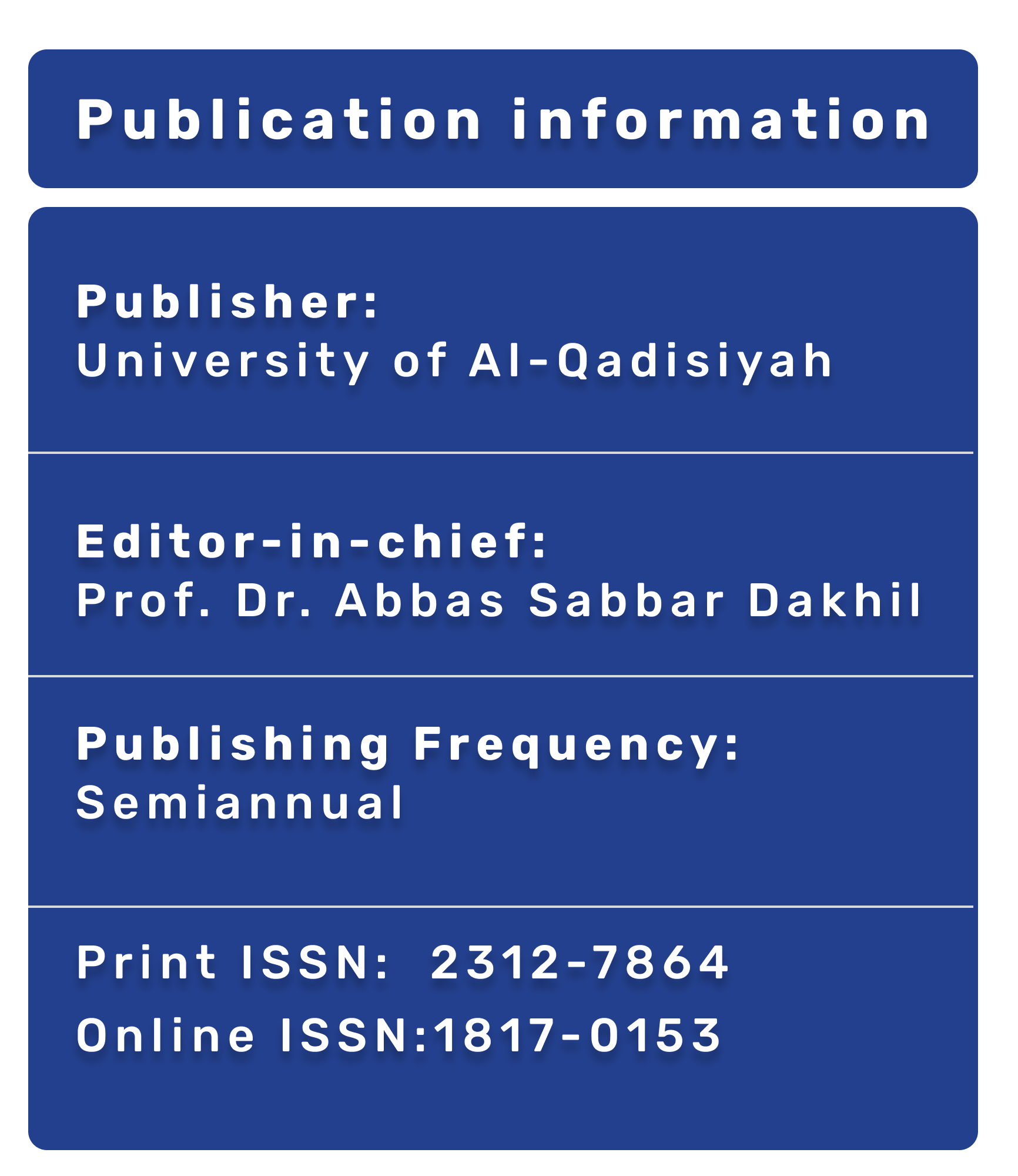A Assessment of alpha emission in the saliva of the smokers using CR-39 (SSNTDS)
الملخص
Background: The concentration of radionuclides in the saliva and blood samples are a good indicator of the human body’s radioactive contamination, the objective of current study was to design across sectional study to assess the alpha particals emitted from the smoker and nonsmoker saliva and blood samples. Materials and Method: The saliva and blood samples were collected from 88 healthy male and famel smoker and non-smoker aged 18- 82 years old. In saliva and blood samples from smokers and nonsmokers, the alpha track density was determined utilizing the efficient fission track analysis approach with CR-39 nuclear track detector. Results: High mean value of alpha track density was significantly seen in smoker saliva and blood samples compared to nonsmoker samples with percentage difference 23% and 9% respactively. There was a positive correlation between smoker age and the alpha emission rate in blood and saliva samples. Conclusion: The smoker and nonsmoker saliva and blood samples did not have equal distribution of alpha track density. According to their standardized coefficients (ß), in saliva and blood samples, the stronger significant impact of alpha emission rate was seen at ß = 0.318 with age interval (70-82) in saliva samples Whil the lowest was found at ß = 0.156 with age interval (44-56) in blood sample.
المراجع
Aghamiri SM, Ghorbani Z, Darafsheh A, Torabzadeh H, Fathivand AA, Minuchehr A, et al. 226 Ra concentration in the teeth of habitants of areas with high level natural radioactivity in Ramsar. Journal of Environmental Radioactivity. 2006;89(3):212–8.
Christensen DM, Livingston GK, Sugarman SL, Parillo SJ, Glassman ES. Mangement of ionizing radiation injuries and illnesses, part 3: radiobiology and health effects of ionizing radiation. The journal of the American Osteopathic Association. 2014;114(7):556–65.
Tirmarche M, Harrison JD, Laurier D, Paquet F, Blanchardon E, Marsh JW. Lung cancer risk from radon and progeny and statement on radon. Ann ICRP. 2010;40(1):1–64.
Human radiosensitivity: report of the independent advisory group on ionizing radiation. 2013.
Karim -. M., Hassan MH. Calculating the concentration of alpha in the blood sample for various areas of Anbar. College of Education. 2011;6:101–9.
Camber -. H. Introduction to Health Physics. New York: Pergamum Press; 1987.
Narayanan NS, Rao BS. Interaction between cigarette smoke condensate and radiation for the induction of genotoxic effects in yeast. Mutat Res [Internet]. 1988;208(1):45–9. Available from: http://dx.doi.org/10.1016/0165-7992(88)90019-x
Piao CQ, Hei TK. The biological effectiveness of radon daughter alpha particles. I. Radon, cigarette smoke and oncogenic transformation. Carcinogenesis [Internet]. 1993;14(3):497–501. Available from: http://dx.doi.org/10.1093/carcin/14.3.497
Rajagopalan P, Nanjappa V, Patel K, Jain AP, Mangalaparthi KK, Patil AH, et al. Role of protein kinase N2 (PKN2) in cigarette smoke-mediated oncogenic transformation of oral cells. J Cell Commun Signal [Internet]. 2018;12(4):709–21. Available from: http://dx.doi.org/10.1007/s12079-017-0442-2
Pierce DA, Sharp GB, Mabuchi K. Joint effects of radiation and smoking on lung cancer risk among atomic bomb survivors. Radiat Res. 2003;159:511–20.
Tomasek L. Lung cancer risk from occupational and environmental radon and role of smoking in two Czech nested case-control studies. Int J Environ Res Public Health [Internet]. 2013;10(3):963–79. Available from: http://dx.doi.org/10.3390/ijerph10030963
Moolgavkar SH, Luebeck EG, Krewski D, Zielinski JM. Radon, cigarette smoke, and lung cancer: a re-analysis of the Colorado Plateau uranium miners’ data. Epidemiology. 1993;4(3):204–17.
Zhang R, Li J, Burns FJ, Huang C. Ionizing radiation synergistic induction of cyclooxygenase-2 with benzo[a]pyrene diol-epoxide through nuclear factor of activated T cells in mouse epidermal CI41 cells. Oncol Repl. 2006;15:721–7.
Mauderly JL, Seilkop SK, Barr EB, Gigliotti AP, Hahn FF, Hobbs CH, et al. Carcinogenic interactions between a single inhalation of 239PuO2 and chronic exposure to cigarette smoke in rats. Radiat Res [Internet]. 2010;173(5):665–76. Available from: http://dx.doi.org/10.1667/RR1907.1
Leuraud K, Schnelzer M, Tomasek L, Hunter N, Timarche M, Grosche B, et al. Radon, smoking and lung cancer risk: results of a joint analysis of three European case-control studies among uranium miners. Radiat Res. 2011;176:375–87.
Tomasek L. Interaction of radon and smoking among Czech uranium miners. Radiat Prot Dosimetry [Internet]. 2011;145(2–3):238–42. Available from: http://dx.doi.org/10.1093/rpd/ncr048
Meenakshi C, Mohankumar MN. Synergistic effect of radon in blood cells of smokers - an in vitro study. Mutat Res [Internet]. 2013;757(1):79–82. Available from: http://dx.doi.org/10.1016/j.mrgentox.2013.06.018
Gilbert ES, Sokolnikov ME, Preston DL, Schonfeld SJ, Schadilov AE, Vasilenko EK, et al. Lung cancer risks from plutonium: an updated analysis of data from the Mayak worker cohort. Radiat Res [Internet]. 2013;179(3):332–42. Available from: http://dx.doi.org/10.1667/RR3054.1
Hunter N, Muirhead CR, Bochicchio F, Haylock RGE. Calculation of lifetime lung cancer risks associated with radon exposure, based on various models and exposure scenarios. J Radiol Prot [Internet]. 2015;35(3):539–55. Available from: http://dx.doi.org/10.1088/0952-4746/35/3/539
Kreuzer M, Sobotzki C, Schnelzer M, Fenske N. Factors modifying the radon-related lung cancer risk at low exposures and exposure rates among German uranium miners. Radiat Res. 2018;189:165–76.
Pershagen G, Akerblom G, Axelson O, Clavensjö B, Damber L, Desai G, et al. Residential radon exposure and lung cancer in Sweden. N Engl J Med [Internet]. 1994;330(3):159–64. Available from: http://dx.doi.org/10.1056/NEJM199401203300302
Kreisheimer M, Sokolnikov ME, Koshurnikova NA, Khokhryakov VF, Romanow SA, Shilnikova NS, et al. Lung cancer mortality among nuclear workers of the Mayak facilities in the former Soviet Union. An updated analysis considering smoking as the main confounding factor. Radiat Environ Biophys. 2003;42:129–35.
Jacob V, Jacob P, Meckbach R, Romanov SA, Vasilenko EK. Lung cancer in Mayak workers: interaction of smoking and plutonium exposure. Radiat Environ Biophys [Internet]. 2006;44(4):307–307. Available from: http://dx.doi.org/10.1007/s00411-006-0033-8
Hunter N, Muirhead CR, Bochicchio F, Haylock RG. Calculation of lifetime lung cancer risks associated with radon exposure, based on various models and exposure scenarios. J Radiol Prot. 2015;35:539–55.
Kreuzer M, Sobotzki C, Schnelzer M, Fenske N. Factors modifying the radon-related lung cancer risk at low exposures and exposure rates among German uranium miners. Radiat Res [Internet]. 2017;189(2):165. Available from: http://dx.doi.org/10.1667/rr14889.1
Monchaux G, Morlier JP, Morin M, Chameaud J, Lafuma J, Masse R. Carcinogenic and cocarcinogenic effects of radon and radon daughters in rats. Environ Health Perspect [Internet]. 1994;102(1):64–73. Available from: http://dx.doi.org/10.1289/ehp.9410264
Liddell FDK, Armstrong BG. The combination of effects on lung cancer of cigarette smoking and exposure in quebec chrysotile miners and millers. Ann Occup Hyg [Internet]. 2002;46(1):5–13. Available from: http://dx.doi.org/10.1093/annhyg/mef008
Furukawa K, Preston D, Lonn S, Funamoto S, Yonehara S, Matsuo T, et al. Radiation and smoking effects on lung cancer incidence among atomic-bomb survivors. Radiat Res. 2010;174:72–82.
Egawa H, Furukawa K, Preston D, Funamoto S, Yonehara S, Matsuo T, et al. Radiation and smoking effects on lung cancer incidence by histological types among atomic bomb survivors. Radiat Res. 2012;178:191–201.
Fleischer -. H., Hart EJ, Attix FH. Radiation Dosimetry, 167. Vol. 167. New York: Academic Press; 1966.
Fleischer RL, Price PB, Walker RM, Walker RM. Nuclear Tracks in Solids: Principles and Applications. University of California Press; 1975.
Durrani -. S. A., Bull RK. Solid State Nuclear Track Detection: Principles, Methods and Applications. Vol. 111. Elsevier; 2013.
Casson RM, Benton EV. Properties and applications of CR-39 Polymeric nuclear track detector. Nuclear Track Detection. 2:173–9.
Granger DA, Fortunato CK, Beltzer EK, Virag MA, Out D. Focus on methodology: salivary bioscience and research on adolescence: an integrated perspective. J Adolesc. 2012;35:1081–95.
Gatzke- Kopp LM, Riis J. Environmental tobacco smoke exposure is associated with increased level of metals in childrens saliva. J of Exposure Science&Environmental Epidemiology. 2023;
Stoffyn M, Mackenzie FT. Fate of dissolved aluminum in the oceans. Mar Chem [Internet]. 1982;11(2):105–27. Available from: http://dx.doi.org/10.1016/0304-4203(82)90036-6
Malra OX, Couto ME, Geraldo LP. Track and radi. Nucl Track and radi Means. 2000;4(4).
Kadhim N, Farhan NF, Tawfeq KAA-G. Determination of Alpha Emitter in the Blood of the Smokers by using CR-39 (SSNTDS). Journal of Education and Scientific Studies. 2021;1.
Almayahi BA, Tajuddin AA, Jaafar MS. Radiobiological long-term accumulation of environmental alpha radioactivity in extracted human teeth and animal bones in Malaysia. J Environ Radioact [Internet]. 2014;129:140–7. Available from: http://dx.doi.org/10.1016/j.jenvrad.2014.01.001
Gollnick DA. Basic Radiation Protection Technology. 6th ed. Pacific Radiation; 2011.
Measurements of Radon Concentrations and Dose Assessments in Chemistry Department-Science College -Al-Mustansiriyah University, Baghdad, Iraq. International Journal of Scientific Research in Science and Technology. 2016;2(4):2395–602.




